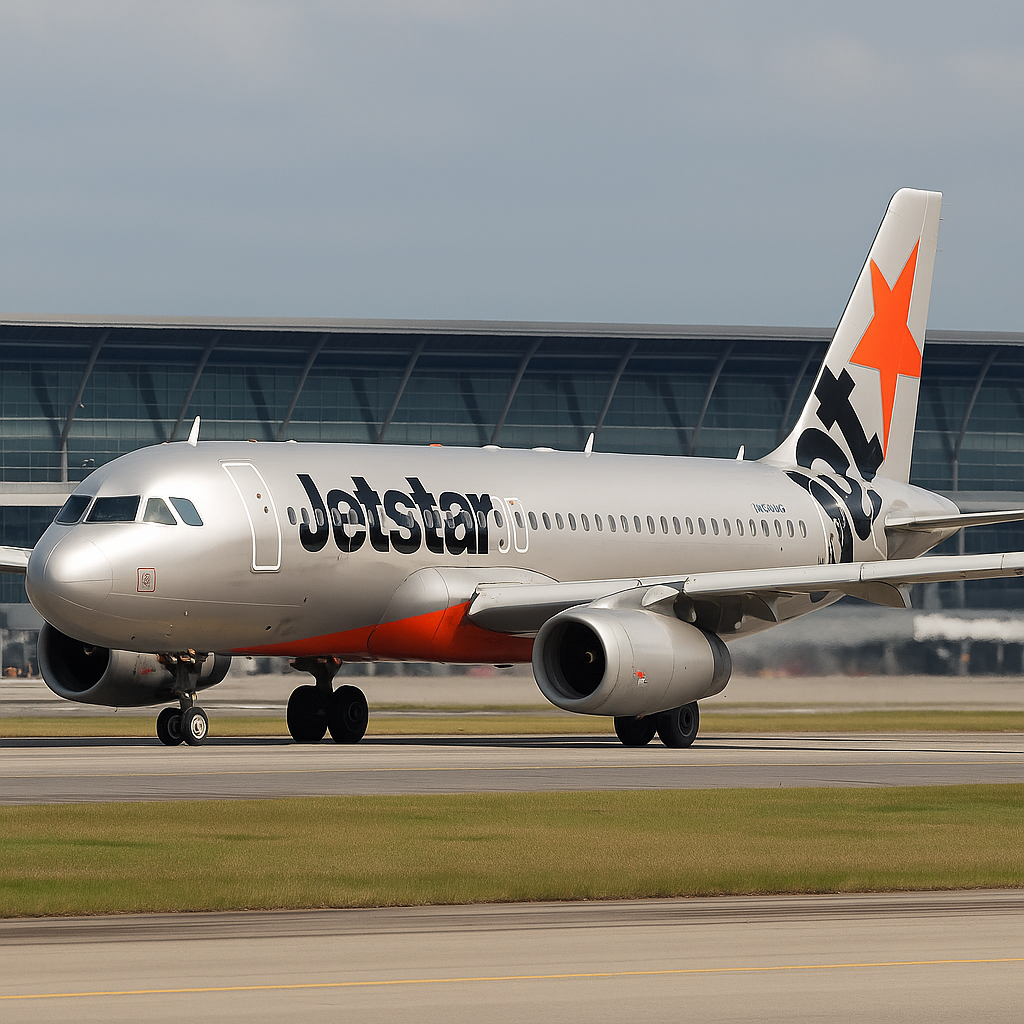
In a significant development that marks the end of a two-decade chapter in Asia’s aviation industry, Jetstar Asia, the Singapore-based budget airline under the Jetstar Group, is officially set to suspend all operations by July 31, 2025. The decision follows years of sustained losses, rising operational costs, and fierce competition in the Southeast Asian low-cost carrier (LCC) market. The announcement has sent ripples across the aviation industry, as stakeholders now assess the broader implications of this exit on staff, passengers, market dynamics, and the Qantas Group’s strategic direction.
The End of a 20-Year Journey
Jetstar Asia commenced operations in December 2004, aiming to provide affordable, no-frills air travel across the Asia-Pacific region. Initially backed by Qantas and Temasek-linked investors, the airline quickly became a recognizable player in the regional LCC market. With a fleet of Airbus A320 aircraft, it served destinations across Southeast Asia, North Asia, and beyond, competing with the likes of AirAsia, Scoot, and Cebu Pacific.
Despite this ambitious beginning, Jetstar Asia struggled to maintain profitability over the long term. The airline managed to turn a profit in only six of its 20 years, largely due to the volatile nature of fuel prices, increasing airport charges, and pressure from competitors.
Factors Leading to the Closure
1. Rising Operational Costs
One of the primary drivers behind the closure is the significant increase in operating expenses. The cost of jet fuel, airport fees, security expenses, and ground handling charges have all surged in recent years, especially in Singapore, where Jetstar Asia is based. These rising costs have placed immense strain on the airline’s already thin margins.
Operating in a premium and highly regulated airport like Changi—one of the most expensive in Asia—further compounded financial pressure. Unlike some competitors that operate from secondary or less congested hubs, Jetstar Asia had limited flexibility in cost reduction.
2. Intense Competition
The Southeast Asian LCC space is among the most crowded and aggressive markets globally. With players like Scoot (a Singapore Airlines subsidiary), AirAsia, VietJet, Lion Air, and others expanding aggressively, Jetstar Asia found it increasingly difficult to maintain its market share. Price wars, route overlaps, and frequency battles made it challenging to sustain profitable routes.
Furthermore, newer entrants with more efficient cost structures and modern fleets further eroded Jetstar Asia’s competitive edge. In this fiercely contested environment, Jetstar Asia’s relatively modest size and legacy cost structure became a disadvantage.
3. Strategic Refocus by Qantas Group
Qantas, the parent company of Jetstar Group, is undergoing a comprehensive strategic realignment. The Group is now shifting its capital and resources toward strengthening its core domestic and trans-Tasman operations, as well as renewing its fleet and expanding premium international services.
The decision to suspend Jetstar Asia operations is aligned with this broader objective. By freeing up aircraft and financial resources from a loss-making segment, Qantas aims to reinvest in higher-margin growth areas and improve its overall financial performance.
Operational Wind-Down and Passenger Services
1. Gradual Reduction in Flights
Jetstar Asia has outlined a phased approach to its shutdown. From mid-June through July 2025, the airline will begin reducing the frequency of its routes. Some services will be consolidated or cancelled altogether, leading up to a complete cessation of operations on July 31.
This approach is intended to minimize disruption for travelers while allowing the airline to manage its resources efficiently during the wind-down period.
2. Passenger Assistance and Compensation
Passengers booked on Jetstar Asia flights scheduled beyond the closure date will be contacted by the airline’s customer service teams. The airline has pledged to provide full refunds or alternative travel arrangements on partner airlines where possible. In addition, affected travelers will receive timely notifications and support through both online and in-person channels.
The airline has also taken steps to coordinate with travel agencies, booking platforms, and partner carriers to facilitate smooth rebooking or compensation processes.
Impact on Employees and Human Resources
1. Job Losses and Redundancies
Jetstar Asia currently employs around 500 staff, including flight crew, ground personnel, customer service teams, and management. The closure will unfortunately lead to job losses across all departments. This is one of the most painful aspects of the decision, as it affects not only the staff but also their families and local communities.
2. Support Programs and Transition Assistance
Qantas Group and Jetstar Asia have promised a comprehensive employee support program. This includes redundancy packages, counseling, job placement services, and skills retraining. Discussions are also underway with local unions and government agencies to facilitate a smooth transition for affected staff.
In addition, Qantas is exploring opportunities for relocating some employees to roles within other parts of the Jetstar Group, including in Australia, New Zealand, and Japan.
Fleet Reallocation and Redeployment Strategy
Jetstar Asia currently operates a fleet of 13 Airbus A320 aircraft. With the suspension of operations, these aircraft will be repurposed across the Qantas Group’s other divisions.
-
Nine A320s will be transferred to Jetstar Airways (Australia and New Zealand) to boost domestic and trans-Tasman capacity.
-
Four A320s will be handed over to Network Aviation, a Qantas subsidiary in Western Australia that supports fly-in, fly-out (FIFO) mining operations.
This reallocation of aircraft will support network expansion, reduce reliance on leased capacity, and improve operational flexibility in higher-demand segments.
Market Implications and Competitor Response
1. A Gap in the Singapore LCC Landscape
Jetstar Asia’s departure will create a noticeable void in Singapore’s aviation ecosystem. As one of the few foreign-owned budget carriers based in the city-state, its closure will impact regional connectivity, especially for low-cost routes to Thailand, the Philippines, Indonesia, and Vietnam.
Singapore’s Changi Airport, while disappointed, is already in talks with other carriers to absorb the capacity and expand services on routes previously operated by Jetstar Asia.
2. Opportunities for Rivals
Competitors such as Scoot, AirAsia, and Cebu Pacific are expected to capitalize on the opportunity by increasing frequencies or launching new services. The intensified demand on certain routes may drive short-term fare hikes but could normalize as airlines scale up capacity.
This consolidation could also lead to improved load factors and route efficiencies across the board, benefiting the broader LCC sector in Southeast Asia.
Financial Impact on Qantas Group
1. Short-Term Costs
The closure of Jetstar Asia will incur an estimated one-time restructuring cost of approximately AUD 175 million. This includes severance packages, asset write-downs, and other closure-related expenses, which will be spread over FY2025 and FY2026.
2. Long-Term Gains
Despite the initial costs, the closure is expected to yield long-term financial benefits. By eliminating a loss-making division, Qantas can improve its overall profit margins. The redeployment of aircraft to more profitable routes and reduced leasing costs will further enhance operational efficiency.
The freed-up capital—estimated to be around AUD 500 million—will support fleet modernization, including the acquisition of newer, fuel-efficient aircraft such as the Airbus A321XLR and Boeing 787.
Leadership and Strategic Direction
Qantas Group CEO Vanessa Hudson has emphasized the importance of disciplined capital allocation and strengthening the airline’s core. This move signals a firm commitment to streamlining operations and focusing on markets where the Group enjoys competitive advantages.
Hudson’s leadership, following the turbulent transition after Alan Joyce’s departure, is being closely watched. The decision to exit Jetstar Asia could be viewed as a bold and pragmatic move to improve the Group’s long-term stability.
Broader Industry Outlook
Jetstar Asia’s closure serves as a wake-up call for the aviation industry in Asia. It highlights the increasing difficulty for small to mid-sized carriers to survive in saturated markets with high fixed costs. The situation underscores the importance of scale, operational efficiency, and market-specific adaptability in the LCC sector.
Looking forward, analysts predict more consolidation in the region. Airlines may pursue mergers, alliances, or exit unprofitable markets. Strategic partnerships and fleet efficiency will become more critical than ever before.
Conclusion
The suspension of Jetstar Asia’s operations by July 31, 2025, is a defining moment in Southeast Asia’s aviation history. It marks the end of a once-promising carrier that struggled to survive in a hyper-competitive market. For the Qantas Group, it is both a strategic and symbolic decision—one that reflects a renewed focus on profitability, core market strength, and long-term sustainability.
While the closure brings short-term pain, especially for affected employees and travelers, it also opens up new avenues for growth and optimization within the Qantas Group. For Southeast Asia’s aviation sector, Jetstar Asia’s exit may usher in a new phase of consolidation, competitiveness, and recalibrated ambition.



